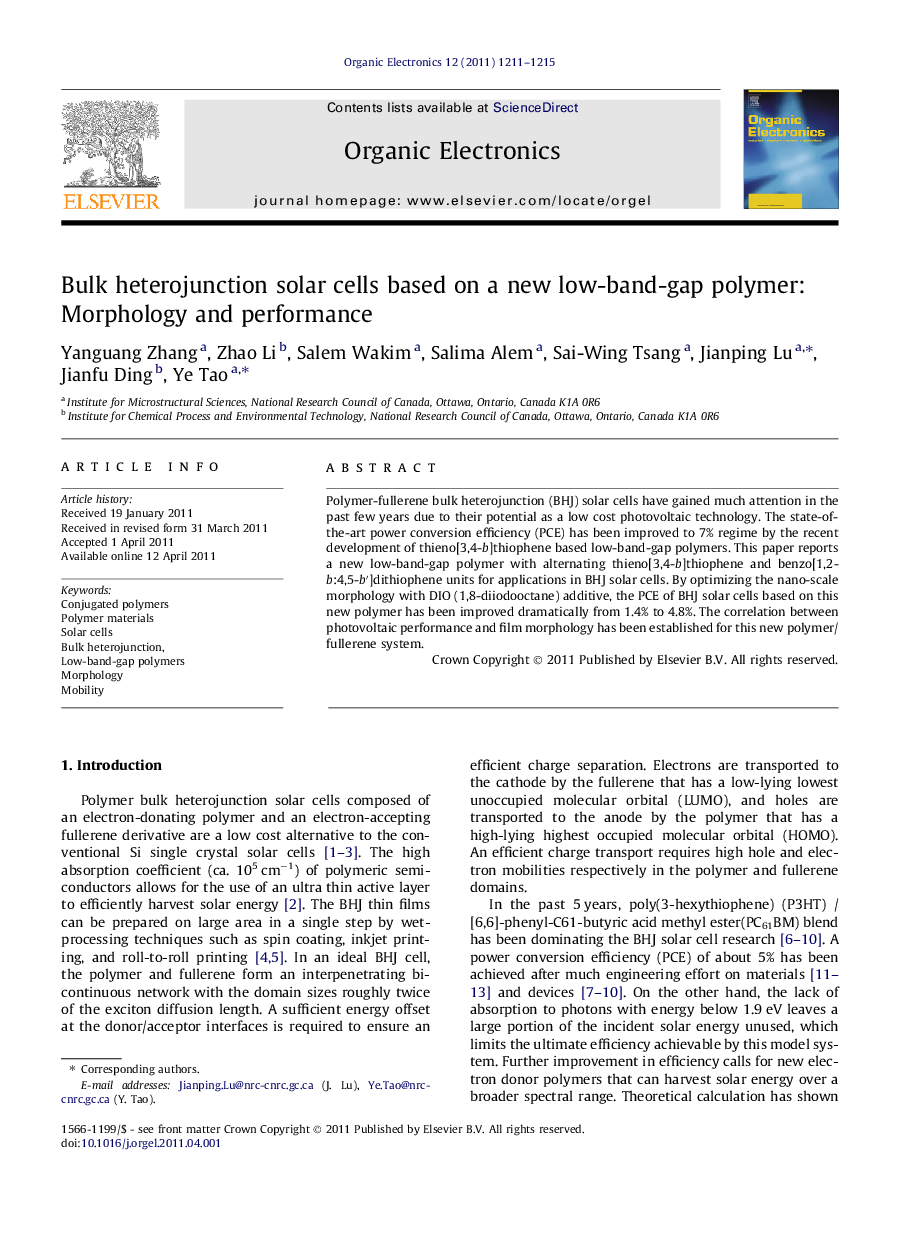| Article ID | Journal | Published Year | Pages | File Type |
|---|---|---|---|---|
| 1264091 | Organic Electronics | 2011 | 5 Pages |
Polymer-fullerene bulk heterojunction (BHJ) solar cells have gained much attention in the past few years due to their potential as a low cost photovoltaic technology. The state-of-the-art power conversion efficiency (PCE) has been improved to 7% regime by the recent development of thieno[3,4-b]thiophene based low-band-gap polymers. This paper reports a new low-band-gap polymer with alternating thieno[3,4-b]thiophene and benzo[1,2-b:4,5-b′]dithiophene units for applications in BHJ solar cells. By optimizing the nano-scale morphology with DIO (1,8-diiodooctane) additive, the PCE of BHJ solar cells based on this new polymer has been improved dramatically from 1.4% to 4.8%. The correlation between photovoltaic performance and film morphology has been established for this new polymer/fullerene system.
Graphical abstractWe report a new low-bandgap polymer with a backbone of alternating thienothiophene and benzodithiophene units for solar cell applications and systematically investigated the effects of DIO processing additive on the film morphology, charge mobility and photovoltaic performance.Figure optionsDownload full-size imageDownload as PowerPoint slideHighlights► We report a new low-band-gap polymer for bulk heterojunction solar cells. ► We show a clear link between PC70BM domain size and electron mobility. ► By optimizing the morphology, the PCE is improved dramatically from 1.4% to 4.8%. ► The correlation between device performance and film morphology has been established.
